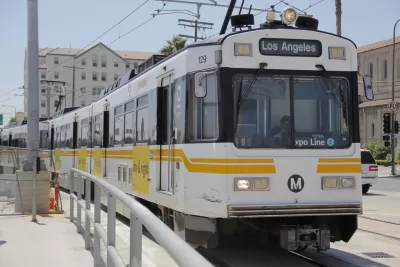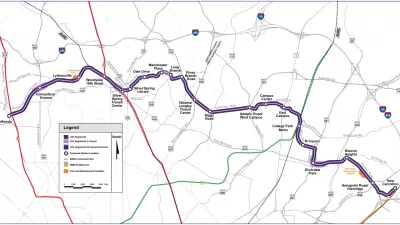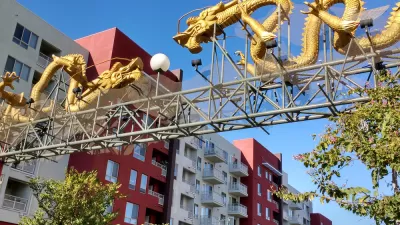As the Los Angeles metro area expands its transit options, transit-oriented development is following suit. In some neighborhoods, lower-income residents are being displaced.

Judging from elections in November and March, L.A. residents seem generally in favor of transit and development. Nate Berg writes about how the city's rail-building spree, while beneficial in many ways, also exacts a social cost.
Pulling from UCLA research, Berg discusses the complexities of displacement, which some development boosters have a tendency to gloss over. "Much of this displacement is happening in neighborhoods surrounding the transit stations in L.A.'s growing public transportation network. Where transit grows, development and displacement seem to follow."
"'I think that we now know there is a dark side of TOD,' says [UCLA planning professor Anastasia] Loukaitou-Sideris. 'That does not mean we should abandon designing TODs, but it definitely means that we really need to safeguard some of these communities.'"
In some places, neighborhoods have effectively organized to limit the scale of development around rail lines, another sensitive point after the city's vitriol-laden fight over the defeated anti-development Measure S.
Berg points to another recent ballot item that may help. "Proposition JJJ, approved by Los Angeles voters in November 2016, requires that new development projects set aside a certain number of affordable housing units and incentivizes the creation of affordable units near transit stations and corridors."
FULL STORY: Neighborhood Watching

Planetizen Federal Action Tracker
A weekly monitor of how Trump’s orders and actions are impacting planners and planning in America.

Congressman Proposes Bill to Rename DC Metro “Trump Train”
The Make Autorail Great Again Act would withhold federal funding to the system until the Washington Metropolitan Area Transit Authority (WMATA), rebrands as the Washington Metropolitan Authority for Greater Access (WMAGA).

The Simple Legislative Tool Transforming Vacant Downtowns
In California, Michigan and Georgia, an easy win is bringing dollars — and delight — back to city centers.

The States Losing Rural Delivery Rooms at an Alarming Pace
In some states, as few as 9% of rural hospitals still deliver babies. As a result, rising pre-term births, no adequate pre-term care and "harrowing" close calls are a growing reality.

The Small South Asian Republic Going all in on EVs
Thanks to one simple policy change less than five years ago, 65% of new cars in this Himalayan country are now electric.

DC Backpedals on Bike Lane Protection, Swaps Barriers for Paint
Citing aesthetic concerns, the city is removing the concrete barriers and flexposts that once separated Arizona Avenue cyclists from motor vehicles.
Urban Design for Planners 1: Software Tools
This six-course series explores essential urban design concepts using open source software and equips planners with the tools they need to participate fully in the urban design process.
Planning for Universal Design
Learn the tools for implementing Universal Design in planning regulations.
Smith Gee Studio
City of Charlotte
City of Camden Redevelopment Agency
City of Astoria
Transportation Research & Education Center (TREC) at Portland State University
US High Speed Rail Association
City of Camden Redevelopment Agency
Municipality of Princeton (NJ)





























